Military drones have become indispensable tools in modern warfare, capable of performing a variety of critical tasks. One of the most notable features of these unmanned aerial vehicles (UAVs) is their ability to reach significant altitudes, providing strategic advantages in surveillance, reconnaissance, and combat missions. In this article, we will explore the altitude capabilities of military drones.
Altitude Capabilities of Military Drones
| Drone Model | Maximum Altitude | Purpose | Manufacturer |
|---|---|---|---|
| MQ-4C Triton | 56,000 feet | Surveillance/Patrol | Northrop Grumman |
| MQ-9 Reaper | 50,000 feet | Combat/Surveillance | General Atomics |
| RQ-4 Global Hawk | 60,000 feet | Reconnaissance | Northrop Grumman |
| MQ-20 Avenger | 50,000 feet | Combat | General Atomics |
| RQ-170 Sentinel | 50,000 feet | Intelligence | Lockheed Martin |
| Skydio X2D | 8,000 feet | Short Range Reconnaissance | Skydio |
| B-21 Raider | >18,000 feet | Strategic Bomber | Northrop Grumman |
| RQ-180 | >18,000 feet | Long Range Reconnaissance | Northrop Grumman |
| X-47B | 40,000 feet | Combat Demonstration | Northrop Grumman |
MQ-4C Triton
The MQ-4C Triton is designed for high-altitude surveillance and patrol missions, primarily for the U.S. Navy. It has a maximum altitude of 56,000 feet, enabling it to cover large maritime areas and provide real-time intelligence and reconnaissance.
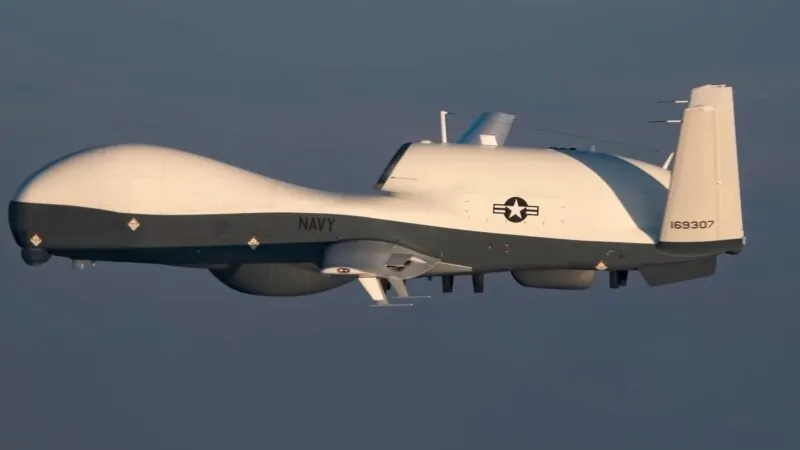
MQ-9 Reaper
The MQ-9 Reaper serves in both combat and surveillance roles. With a maximum altitude of 50,000 feet, it is used by the U.S. Air Force and other military forces for targeted strikes and intelligence missions, benefiting from its ability to operate at high altitudes and stay airborne for extended periods.
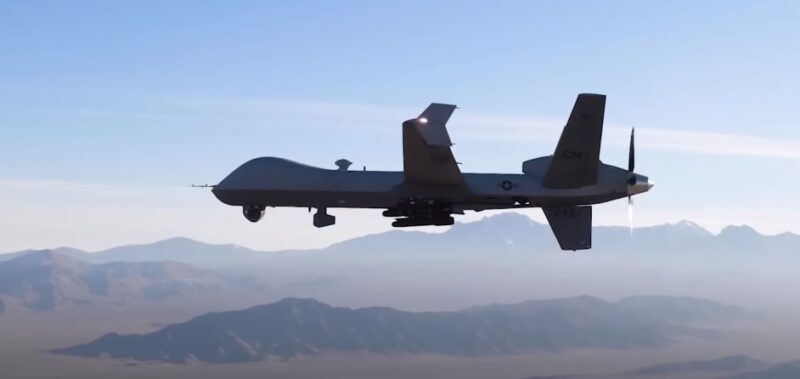
RQ-4 Global Hawk
The RQ-4 Global Hawk is a high-altitude, long-endurance unmanned aerial vehicle used for reconnaissance. Its maximum operational ceiling of 60,000 feet allows it to conduct extensive surveillance operations, gathering vital intelligence over large areas without detection.
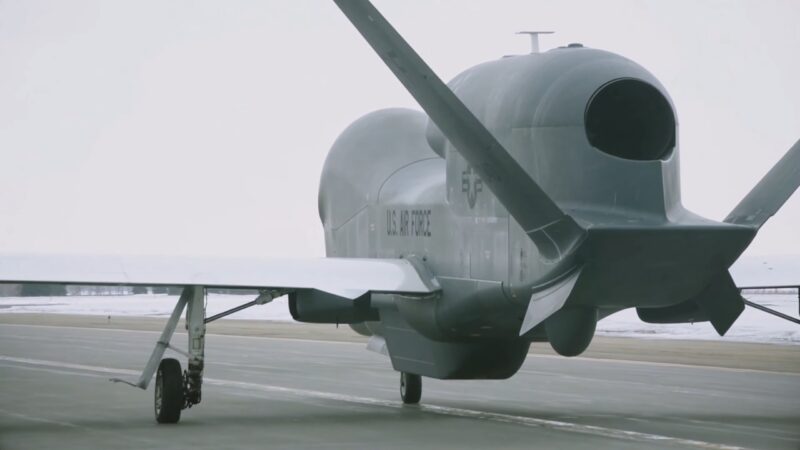
MQ-20 Avenger
The MQ-20 Avenger is a combat-focused UAV with a maximum altitude of 50,000 feet. It provides a strategic advantage in military operations by offering high-altitude capabilities for both surveillance and precision strikes.
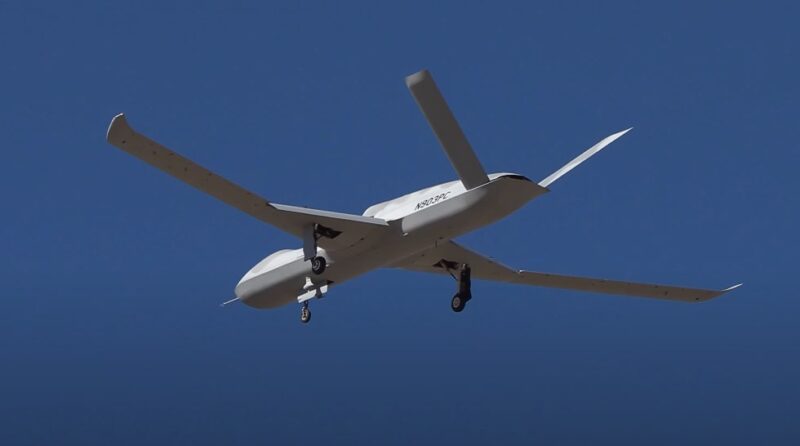
RQ-170 Sentinel
The RQ-170 Sentinel is an intelligence-focused UAV, capable of flying at altitudes up to 50,000 feet. It is used for gathering critical information and conducting surveillance missions in contested areas, leveraging its high-altitude performance to avoid detection.
Skydio X2D
The Skydio X2D is designed for short-range reconnaissance missions, with a maximum altitude of 8,000 feet. It is part of the U.S. Army’s Short Range Reconnaissance (SRR) program and is equipped with advanced AI tools for efficient scouting and data collection.
B-21 Raider
The B-21 Raider is a strategic bomber with a capability to exceed 18,000 feet. Although primarily designed for long-range bombing missions, its altitude capabilities enable it to evade enemy defenses and deliver payloads with precision.
RQ-180
The RQ-180 is a long-range reconnaissance UAV capable of flying above 18,000 feet. It is designed for stealth and high-altitude operations, providing critical intelligence and surveillance over hostile territories.
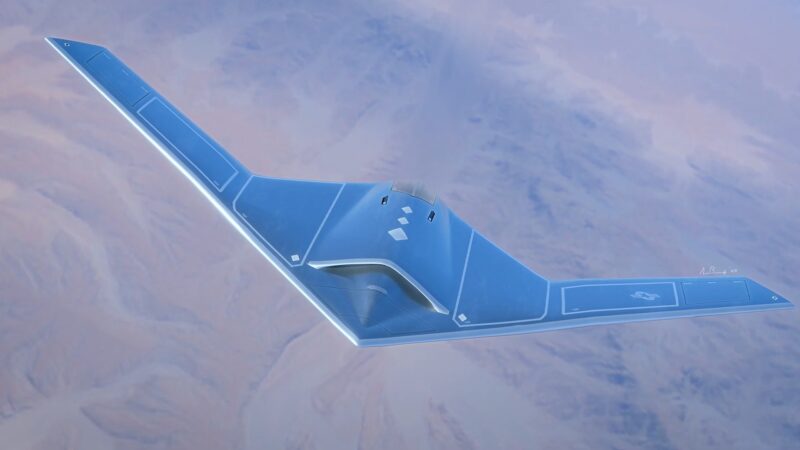
X-47B
The X-47B is a combat demonstration UAV with a maximum altitude of 40,000 feet. Used by the U.S. Navy, it showcases advanced technologies for autonomous flight and carrier-based operations, demonstrating the future potential of unmanned combat aircraft.
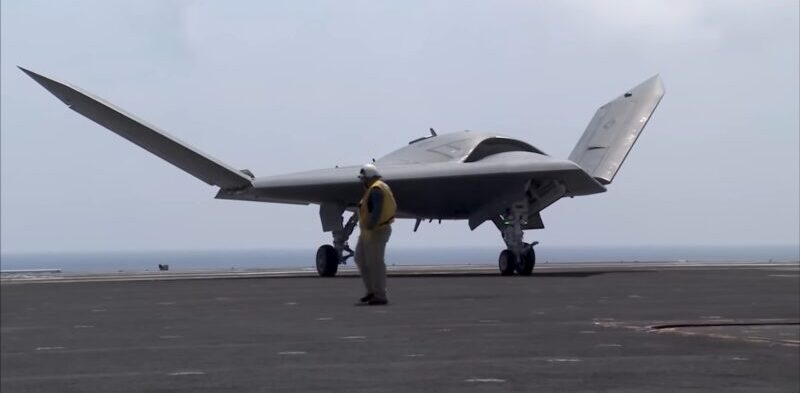
Factors Affecting Drone Altitude
Air Density

As drones ascend, the air becomes thinner, reducing lift generated by their wings or rotors. This decrease in air density impacts the drone’s ability to maintain altitude and requires more power to stay aloft. High altitudes demand efficient aerodynamic designs to counteract these challenges.
Battery Life
Battery life is a crucial factor influencing a drone’s maximum altitude. At higher altitudes, drones consume more power due to reduced air density and increased drag. This limits the operational time and overall altitude a battery-powered drone can achieve, necessitating advancements in battery technology to enhance performance.
Propulsion Methods
The type of propulsion system used in a drone significantly impacts its altitude capabilities. Efficient engines and hybrid power systems combining batteries and fuel engines extend flight duration and allow drones to reach higher altitudes. These systems provide the necessary thrust and power to operate in thinner air.
Software Restrictions
Many military drones have software-imposed altitude restrictions to prevent unauthorized flights into restricted airspace and ensure safe operation. These restrictions are designed to comply with airspace regulations and protect other aircraft from potential collisions.
Weather Conditions

Weather conditions play a significant role in determining a drone’s maximum altitude. Extreme temperatures, high winds, and atmospheric pressure changes can affect drone performance. Hot temperatures reduce air density, making it harder for drones to generate lift, while strong winds can destabilize the drone and push it off course.
Payload Weight
The weight of the payload carried by a drone affects its altitude capabilities. Heavier payloads require more power to lift and maintain altitude, reducing the drone’s maximum operational ceiling. Drones designed for high-altitude missions often use lightweight materials and advanced designs to minimize weight and maximize performance.
Autonomous Flight Systems
Modern military drones are equipped with autonomous flight systems that enhance their ability to navigate and operate at high altitudes. These systems use sophisticated algorithms to avoid obstacles and maintain stability in challenging environments, contributing to the drone’s overall altitude performance.
The Role of Technology in Altitude Performance
Engine Power
Advancements in engine technology have significantly increased the altitude capabilities of military drones. Powerful engines provide the necessary thrust to reach higher altitudes, overcoming challenges posed by thinner air and reduced lift. These engines are designed for efficiency and durability, ensuring sustained performance during long missions.
Lightweight Materials
The use of lightweight, high-strength materials in drone construction plays a crucial role in enhancing altitude performance. Materials such as carbon fiber and advanced composites reduce the overall weight of the UAV, allowing it to ascend to greater heights without compromising structural integrity or endurance.
Aerodynamic Design
Aerodynamic design is vital for high-altitude flight. Streamlined shapes and optimized wing configurations minimize drag, improving lift-to-drag ratios. This allows drones to maintain stability and efficiency at high altitudes, where air density is lower. Advanced aerodynamics contribute to longer flight times and higher operational ceilings.
Autonomous Flight Systems
Modern military drones are equipped with sophisticated autonomous flight systems. These systems use advanced algorithms and sensors to navigate complex environments, avoid obstacles, and maintain optimal flight paths. Autonomous capabilities are especially important at high altitudes, where human intervention might be limited by communication delays or visibility issues.
Satellite Communication Systems
High-altitude drones rely on satellite communication systems to maintain contact with ground control. These systems provide reliable and secure data transmission, enabling real-time command and control even at extreme altitudes. Satellite links ensure that drones can operate effectively over vast distances, beyond the line of sight of ground stations.
Advanced Navigation Technologies
Precision navigation technologies, such as GPS and inertial navigation systems, are critical for high-altitude operations. These technologies ensure accurate positioning and trajectory control, allowing drones to perform precise maneuvers and maintain designated flight paths. High-altitude drones use these systems to enhance mission accuracy and effectiveness.
Enhanced Power Systems
Innovations in power systems, including hybrid engines and improved battery technology, extend the operational range and altitude of military drones. Hybrid systems combine the endurance of fuel engines with the efficiency of electric motors, allowing drones to achieve longer flight times and reach higher altitudes while carrying substantial payloads.
Main Use and Advantages
Surveillance and Reconnaissance
Military drones are extensively used for surveillance and reconnaissance missions. High-altitude drones like the RQ-4 Global Hawk provide real-time intelligence over vast areas, enabling military forces to monitor enemy movements, gather critical data, and conduct strategic planning without being detected. These drones’ ability to operate at altitudes up to 60,000 feet allows them to capture high-resolution imagery and sensor data from a safe distance.
Combat Operations
Drones such as the MQ-9 Reaper and MQ-20 Avenger are designed for combat operations, providing both surveillance and precision strike capabilities. Their high-altitude performance ensures that they can engage targets while remaining out of reach of enemy defenses. This capability reduces the risk to human pilots and increases the effectiveness of military operations by delivering precise, timely strikes.
Border and Maritime Patrol
Drones like the MQ-4C Triton are used for border and maritime patrol missions. Operating at altitudes of 56,000 feet, these drones monitor vast stretches of borders and coastlines, detecting illegal activities, monitoring maritime traffic, and providing early warning of potential threats. Their endurance and high-altitude capabilities make them invaluable for maintaining national security and sovereignty.
Intelligence Gathering
The RQ-170 Sentinel and similar drones are employed for intelligence gathering missions. Flying at altitudes up to 50,000 feet, these UAVs collect vital information on enemy positions, communications, and activities. Their ability to operate undetected at high altitudes makes them crucial assets for covert intelligence operations and strategic planning.
Disaster Response and Humanitarian Aid
High-altitude drones also play a significant role in disaster response and humanitarian aid. They provide real-time aerial imagery and data to assess damage, coordinate relief efforts, and monitor affected areas. The ability to quickly deploy and cover large areas from high altitudes ensures that response teams have the information needed to effectively manage crises and deliver aid where it is most needed.
Environmental Monitoring
Military drones are increasingly used for environmental monitoring, tracking climate change, and observing wildlife. Their high-altitude capabilities allow them to cover extensive areas and collect data on atmospheric conditions, pollution levels, and natural habitats. This information is essential for scientific research, conservation efforts, and developing strategies to combat environmental issues.
Communication and Network Extension
Drones equipped with communication relay systems can extend communication networks in remote or hostile areas. High-altitude UAVs can serve as temporary communication hubs, providing connectivity for military operations, disaster response teams, and remote communities. This capability ensures reliable communication in areas where traditional infrastructure is unavailable or damaged.
Continual Development
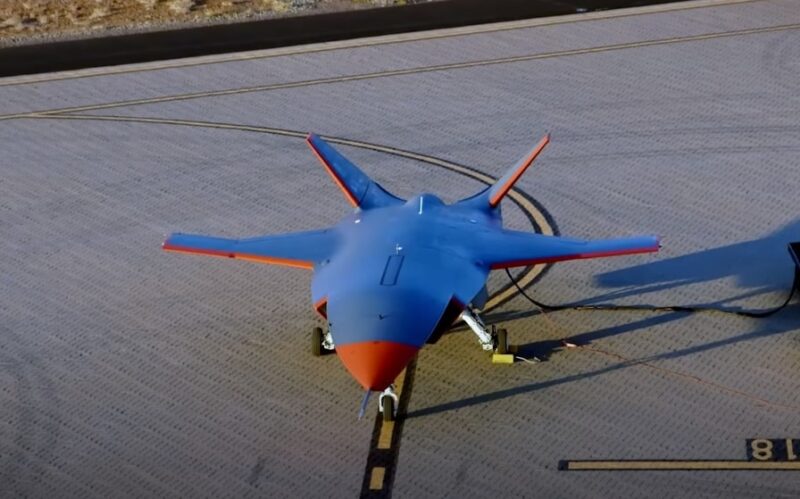
Hypersonic Engines
One of the most promising advancements in drone technology is the development of hypersonic engines. These engines have the potential to enable drones to fly at speeds exceeding 6,000 miles per hour, significantly increasing their operational ceilings. Hypersonic drones could revolutionize reconnaissance and surveillance missions by covering vast distances in a fraction of the time currently required.
Advanced Materials
Researchers are exploring new materials that could further reduce the weight of drones while increasing their structural integrity. The use of nanomaterials and advanced composites could lead to drones that are both lighter and stronger, allowing them to reach higher altitudes and carry larger payloads without compromising performance.
Improved Battery Technology
Battery technology is continuously evolving, with developments in energy density and efficiency. Future drones could benefit from batteries that provide longer flight times and higher power output, enabling them to maintain high altitudes for extended periods. This would enhance the endurance and operational range of military drones, making them even more effective for long-duration missions.
Autonomous Flight and AI Integration
The integration of artificial intelligence (AI) and more advanced autonomous flight systems will play a crucial role in the future of military drones. AI can optimize flight paths, manage energy consumption, and adapt to changing environmental conditions, ensuring that drones can operate at maximum efficiency. These systems will allow drones to make real-time decisions, avoid obstacles, and maintain optimal altitude without human intervention.
Enhanced Sensor and Communication Systems
Future drones are expected to be equipped with even more sophisticated sensors and communication systems. These enhancements will allow for better data collection, real-time analysis, and secure communication with ground control. Advanced sensors can operate effectively at higher altitudes, providing clearer and more detailed imagery and intelligence.
Modular Design
Modular drone designs will enable the quick adaptation of drones for various missions. By swapping out different components, such as sensors, engines, or communication systems, military drones can be tailored for specific tasks. This flexibility will allow drones to achieve optimal performance at high altitudes for a wide range of applications.
Regulatory and Safety Enhancements
As drone technology advances, so too will the regulatory frameworks governing their use. Enhanced safety protocols and more precise regulations will ensure that high-altitude drones can operate without posing risks to other aircraft. These advancements will facilitate the safe integration of drones into national and international airspaces, enabling them to reach their full altitude potential.
FAQs
How Long Can Military Drones Stay in the Air?
Military drones’ endurance varies based on their design and power systems. Fixed-wing drones can stay airborne for 12 to 48 hours, while rotary-wing drones typically operate for 1-2 hours before needing refueling or recharging. Advanced battery and hybrid power technologies continue to extend these durations.
Can Military Drones Operate in Extreme Weather Conditions?
Military drones are designed to withstand a range of environmental conditions, but their performance can be affected by extreme weather. High winds, heavy rain, and snow can impact flight stability and altitude. Some drones are equipped with weather-resistant features to operate in harsh conditions, but missions may be postponed if the weather is too severe.
What Are the Different Propulsion Methods Used in Military Drones?
Military drones use various propulsion methods, including electric motors, internal combustion engines, and hybrid systems. Electric motors are common in smaller drones, while larger UAVs often use fuel engines for greater endurance. Hybrid systems combine the benefits of both, offering extended flight times and higher altitudes.
How Do Military Drones Communicate with Ground Control?
Military drones use advanced communication systems, including satellite links, to maintain contact with ground control stations. These systems provide secure, real-time data transmission, enabling operators to control the drone and receive intelligence from anywhere in the world.
Are Military Drones Capable of Autonomous Operations?
Yes, many modern military drones are equipped with autonomous flight systems that allow them to operate without continuous human intervention. These systems use advanced algorithms and AI to navigate, avoid obstacles, and execute missions, enhancing the drone’s operational efficiency and effectiveness.
Conclusion
Military drones possess impressive altitude capabilities, with some models able to reach up to 60,000 feet or more. These high-altitude drones play crucial roles in surveillance, reconnaissance, combat operations, and other strategic missions.
Factors such as air density, battery life, propulsion methods, and advanced technology significantly influence their altitude performance. As technology continues to evolve, future drones are expected to achieve even greater heights and capabilities, enhancing their effectiveness in various military applications.
The continued innovation in materials, engines, and autonomous systems will further expand the operational scope and strategic advantages of military drones.







